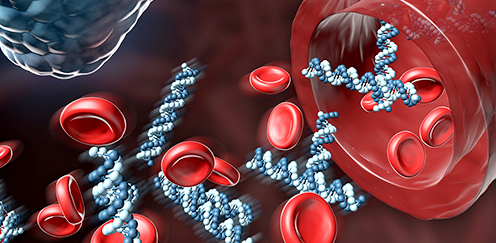
Frequently Asked Questions
How it Works?
What is Carbon 60?
Carbon 60 is a tiny molecule composed of 60 carbon atoms arranged in a sphere, and is also known as a buckyball.
Buckyballs are members of the fullerene family of carbon structures, which also include spheres, tubes, ellipsoids and a variety of other shapes.
Fullerenes can range from 20 carbon atoms up to as many as 100 carbon atoms, and are of great interest to researchers for both their chemical properties and possible applications in industry and technology.
What does C60 mean?
C60 is short for Carbon 60, a cluster of sixty carbon atoms in the shape of a ball, also known as buckminsterfullerene or a buckyball.
The carbon atoms in C60 fullerene are linked to three adjacent carbon atoms by strong covalent bonds, and form a spherical pattern of 20 hexagons and 12 pentagons, also known as a truncated icosahedron. The C60 molecule is around 0.7 to 1 nanometres in diameter.
C60 was the first fullerene molecule to be discovered, and its spherical shape makes it ideal for use in a wide range of chemical and industrial processes.
Who discovered Carbon 60?
Carbon 60 fullerene was first discovered and manufactured in 1985 by four scientists, James Heath, Richard Smalley, Sean O’Brien and Robert Curl.
Carbon 60 was the first fullerene molecule to be discovered, and was created while using a laser to vaporize carbon, in an attempt to recreate the infrared emissions from giant red carbon stars.
The carbon clusters they created during this process ranged in size from 20 carbon molecules and larger, but Carbon 60 and Carbon 70 were found to be the most common, with C60 appearing more than three times as often as any other carbon cluster.
They also discovered that they could increase the concentration of Carbon 60 molecules by allowing the plasma to react for longer, creating up to 40-times as much Carbon 60 compared to the other carbon structures.
The discovery of Carbon 60 was awarded the 1996 Nobel Prize in Chemistry.
What is Carbon 60 used for?
The incredible properties and behaviors of Carbon 60 means that it is being described by some as the “swiss army knife” of organic chemistry, with the potential to use it as the starting point for thousands of useful substances.
The way that carbon 60 absorbs light and attracts electrons makes it an excellent substance to use in solar cells, for harvesting energy from the sun.
Buckyballs have also been used for lubrication, as tiny molecular “ball bearings”, and have also been used to create microscopic wires, transistors and other components of electrical circuits.
The shape and covalent chemical bonds in Carbon 60 make it very strong, and the molecules bond readily with other substances, making it ideal for adding to composite materials such as plastics, to provide additional strength and other properties.
Carbon 60 buckyballs might also be able to used to reduce bacterial growth in water systems.
In the biomedical industry, researchers are exploring whether buckyballs can:
- Reduce inflammation
- Fight the degeneration that occurs during multiple sclerosis
- Bind to the proteins in HIV to prevent its spread
- Carry radioactive atoms to the sites of cancerous tumours
- Reduce aging and extend the lifespan of mammals, including humans
Why is it called a buckyball?
To the researchers, their newly discovered Carbon 60 molecule reminded them of these futuristic geodesic domes popularized in the 1930s by Buckminster Fuller, an American architect and inventor.
So they named the Carbon 60 molecule “buckminsterfullerene”, which these days is usually shortened to “fullerene” or “buckyball”..
And that’s why Carbon 60 is also known as buckyballs.
Where is Carbon 60 found?
Some forms of fullerene, including C60, C72, C76, C82 and C84 have been found to occur naturally in soot, lightning discharges and also in the minerals known as shungite, found in Russia.
Fullerene molecules have also been detected in the dust around stars, suggesting that buckyballs have existed for a very long time in nature.
The incredible versatility and resilience of Carbon 60 has led some to suggest that C60 may have played an important role in the creation of the universe as we know it, potentially serving as the starting point for planets and perhaps even life itself.
How is Carbon 60 made?
Most carbon 60 is manufactured in the laboratory, using an electric arc between two carbon electrodes to create soot from which the carbon 60 fullerene molecules can be extracted. Tweaking the soot-creating conditions also allows carbon nano tubes to be created instead of C60 buckyballs.
The soot created by this process is treated with organic solvents, and passed through special extraction laboratory equipment to extract the Carbon 60, along with other fullerenes. This is a difficult process, as C60 does not readily dissolve in many solvents.
The extracted Carbon 60 can be separated and purified further using chromatography, after which the solvents are fully evaporated to produce C60 powders that are as pure as 99.9% and higher.
What’s interesting about Carbon 60?
They are exceptionally stable molecules, and are not easily dissolved in water or other solvents. Their spherical shape can trap other atoms inside them, they can act as super conductors, and they have been shown to behave as both a wave and a particle according to quantum physics.
Buckyballs have also been shown to bounce, even when fired into stainless steel walls at more than 24,000 kilometers per hour. C60 molecules also return to their original shape when squeezed, and they can also spin at incredibly high speeds, even at room temperature.
They can also withstand high temperatures and pressures, and the carbon 60 molecules can react with other atoms while preserving their spherical shape. C60 has also been shown to be resistant to both chemical corrosion and radioactivity. C60 fullerene molecules are very slightly soluble in organic solvents such as toluene, but are insoluble in water.
Carbon 60 molecules are very good electron acceptors, meaning that they readily accept free electrons from other substances. This means that Carbon 60 can be oxidized, happily taking on extra electrons, although they will also readily release electrons under the right conditions. They react readily when mixed with free radicals to form reversible “radical” C60 molecules.
C60 also shows promise for use as both an electrical conductor and a superconductor, potentially through replacing some carbon atoms with other elements, including both sodium and potassium.
Solid carbon 60 is soft, like the graphite in lead pencils, but turns into a super hard form of diamond under extreme pressure. It also absorbs light at significantly higher rates, when it is subjected to higher-intensity light.
And research in 2012 on the toxicity of Carbon 60 showed that not only was it not toxic at all to rats, but that it almost doubled their lifespan, possibly due to the fact that it is a highly effective antioxidant, with the ability to “mop up” free radicals hundreds of times better than standard anti-oxidants.



